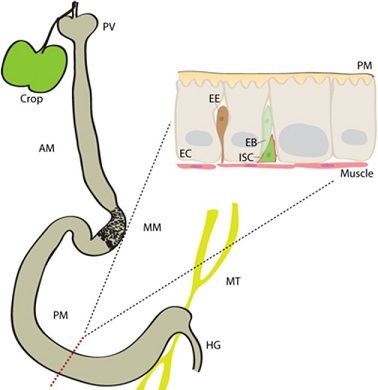My name is Joi McLaughlin. I am a recent graduate of Duke University where I received a Bachelor’s of Art degree in Visual Arts with a Minor in Chemistry while pursuing a Pre-Medical School Curriculum. I initially became involved in research as a Duke University Howard Hughes Vertically Integrated Partners (HHVIP) Research Fellow during my sophomore year. During the program and for the duration of my undergraduate career, I worked under the mentorship of Dr. Pelin Volkan in the Department of Biology.
My research project during HHVIP utilized fruit flies to determine the link between odors and corresponding fly behavior. Our goal was to understand why related flies reacted differently to identical odors. Since the structure and arrangement of human and fruit fly olfactory systems are similar, our research was a valuable stepping-stone to understanding the development and function of human olfaction. The results suggested that there may be differences in the abundance, type, and location of odor-related brain cells between fly species. As a budding research physician, I want to continue to use my knowledge of the fruit fly species to influence others’ health. Thus, I am excited to be involved in the regenerative medical research sponsored by the SENS Research Foundation.
This summer, at the Buck Institute For Research on Aging, I will be working on a project in the laboratory of Dr. Heinrich Jasper. I will be examining the effect of unfolded proteins in fruit fly mitochondria on stem cell maintenance. The mitochondrion is a cellular component that supplies energy to organisms through the breakdown and transport of molecules, provides storage of calcium ions for cell signaling, and generally regulates cellular metabolism. Previous studies have shown that fruit fly gut stem cells tend to divide and generate new cells more frequently in stressful environments. Coincidently, the stress of numerous unfolded proteins in the mitochondrion triggers the mitochondrial unfolded protein response.
This summer, at the Buck Institute For Research on Aging, I will be working on a project in the laboratory of Dr. Heinrich Jasper. I will be examining the effect of unfolded proteins in fruit fly mitochondria on stem cell maintenance. The mitochondrion is a cellular component that supplies energy to organisms through the breakdown and transport of molecules, provides storage of calcium ions for cell signaling, and generally regulates cellular metabolism. Previous studies have shown that fruit fly gut stem cells tend to divide and generate new cells more frequently in stressful environments. Coincidently, the stress of numerous unfolded proteins in the mitochondrion triggers the mitochondrial unfolded protein response.
Recently, the response to mitochondrial unfolded proteins has been shown to control the aging rate of various organisms and has been associated with many renowned aging modulators, such as sirtuin deacetylases and insulin signaling. We also know that activating the response in certain body parts can have global effects, and these effects could greatly impact the aging process.
Yet, there remains uncertainty regarding which proteins initiate the active pathway that alters aging, as opposed to those that are just associated with the process, and also the exact difference between mitochondrial unfolded protein response and other stress responses that seem to have no influence on aging. Thus, this project aims to provide some clarity concerning these aspects of the response.

Figure 1. The Drosophila intestine.
The midgut in Drosophila is subdivided into anterior midgut (AM), middle midgut (MM), and posterior midgut (PM) regions. It contains a single population of mitotically active intestinal stem cells (ISCs), which spread from anterior to posterior regions of the gut. An ISC asymmetrically divides to generate an intermediate enteroblast (EB), which eventually differentiates either into an enterocyte (EC) or enteroendocrine (EE) cell.
To understand how the active pathway causing the mitochondrial unfolded protein response occurs, I will be stimulating genetic crosses by building fruit flies with various inserted DNA elements associated with the response. I will be mating male and virgin female flies containing these elements to produce flies with mitochondrial stress and dissecting guts from these offspring. Then, I will examine how fruit fly gut cells respond to the mitochondrial stress based on the various genes expressed from the fly’s DNA.
Additionally, I will be constructing a secondary set of genetics crosses with fruit flies containing these same DNA elements. However, their genetic makeup will also contain components that target stem cells and developing stem cells in the fruit fly gut during the mitochondrial stress response. Again, I will dissect guts from selected offspring, stain the guts for a protein that is active during a specific phase of cell division, and count the number of stem cells and developing stem cells containing this protein. I will then compare these values to the cell development of fruit flies not undergoing the stress response to evaluate the rate of cell division during the mitochondrial unfolded protein response.
Future Plans:
In the future, I plan to attend medical school and pursue a joint MD/PhD degree, combining my interest in solving medical obscurities and providing direct assistance to those affected by illnesses. My desire is that my research conducted at Duke University and the Buck Institute will bring about new understanding of human genetics that can lead to regenerative medical treatment that cures numerous diseases and improves life quality of those suffering from such.


